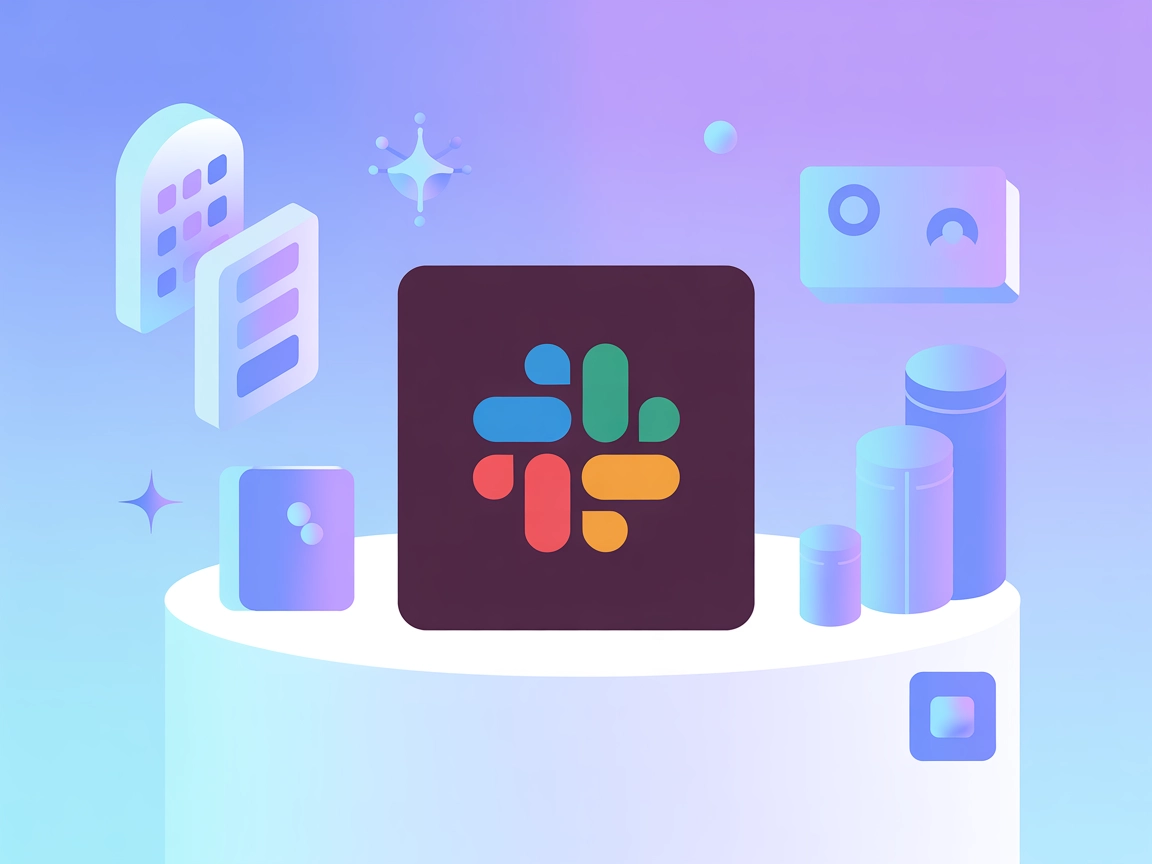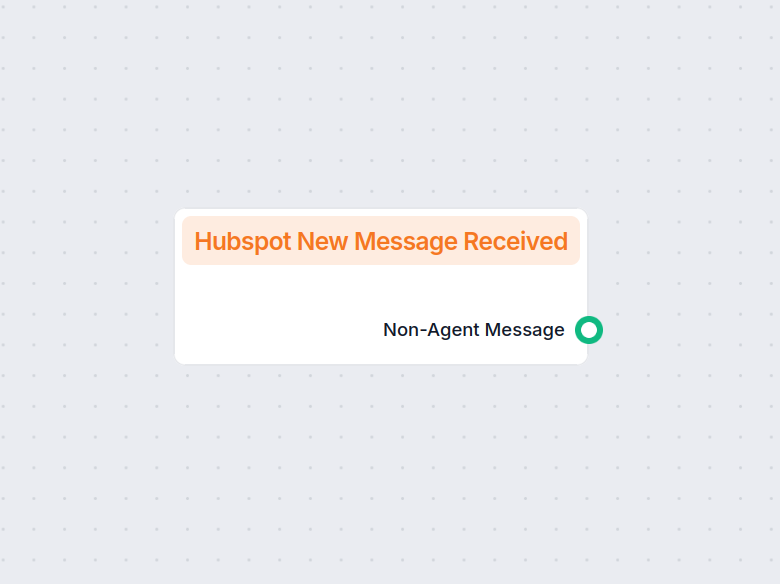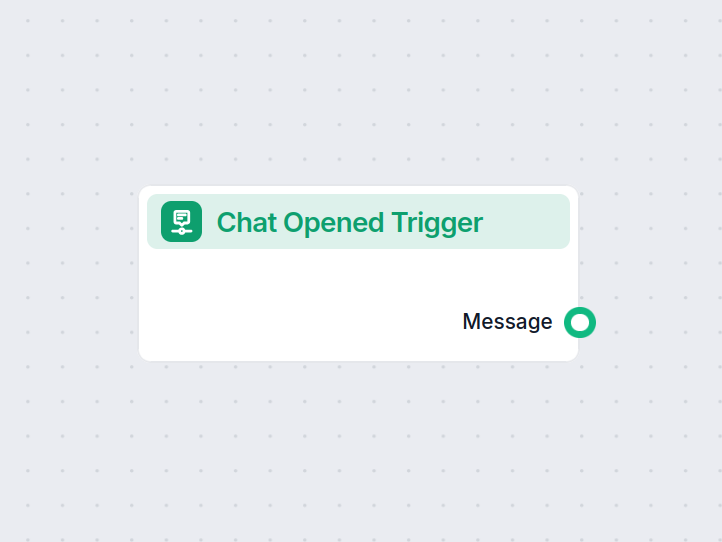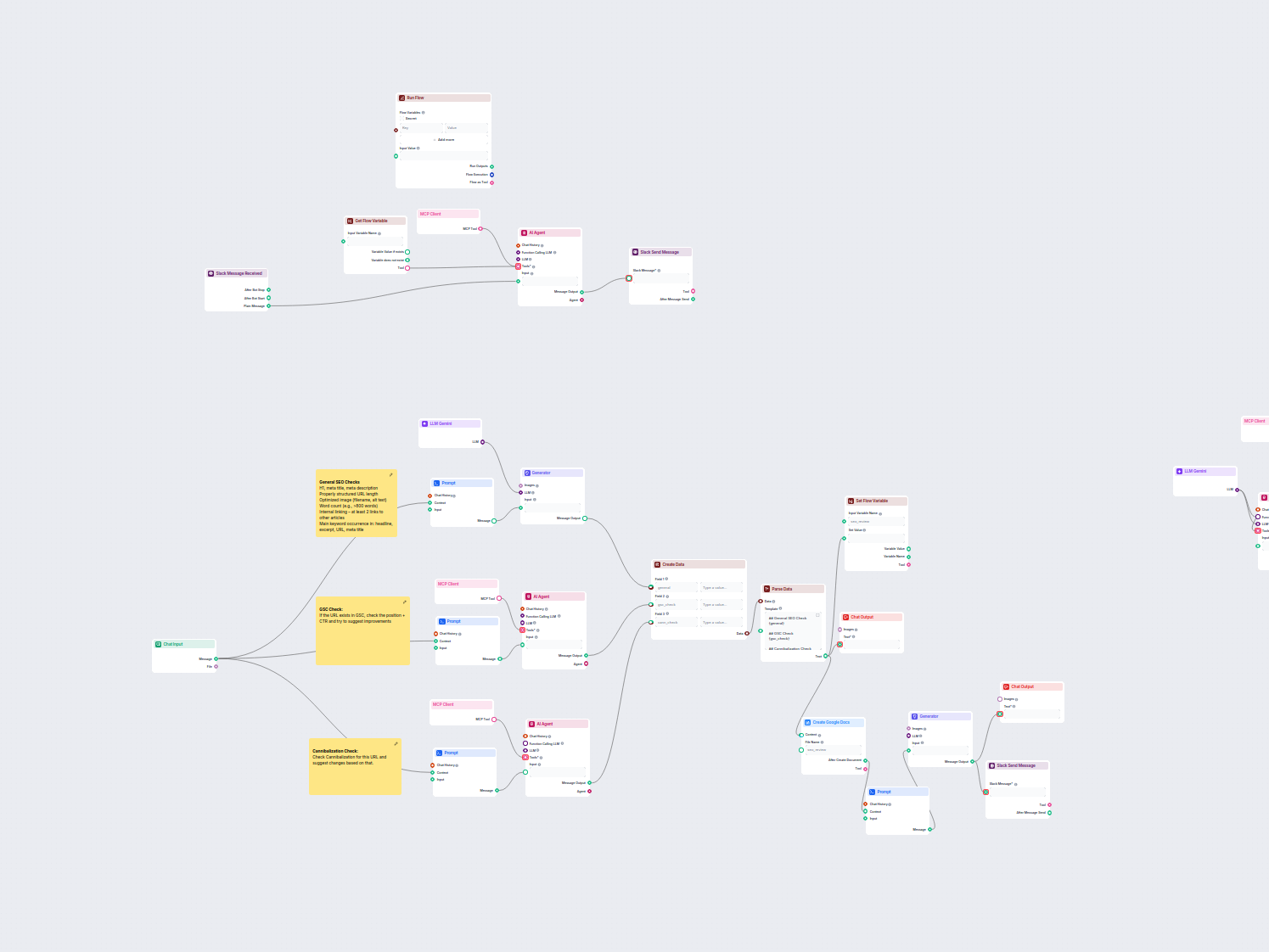
Geautomatiseerde SEO-audit & Slack-workflow
Deze workflow automatiseert het SEO-review- en auditproces voor webpagina's. Het analyseert paginacontent op SEO best practices, voert controles uit via Google ...
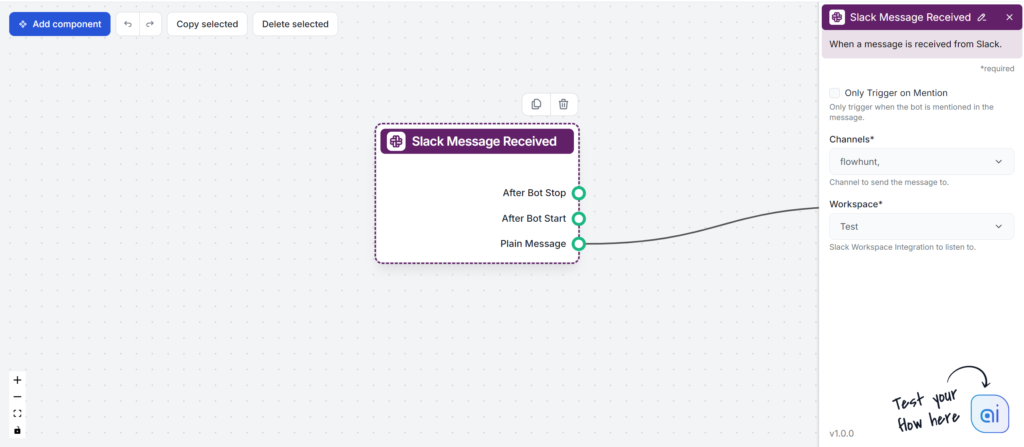
De Slack-bericht ontvangen-component in FlowHunt stelt je in staat Slack-reacties te beheren met triggers en uitvoerhandles, zodat geautomatiseerde flows in je Slack-werkruimte kunnen starten.
Componentbeschrijving
This component represents the user message at the start of a Slack conversation with FlowHunt. You can think of it as a trigger component or an Input component. It lets you control when, where, and how Flo’s Slack responses are triggered.
Using this component requires an active Slack Integration. If you haven’t integrated Slack yet, follow this guide.
The Slack Message Received component is a trigger node designed for AI workflows that need to react to incoming Slack messages. It allows your workflow to listen for messages in specific Slack channels and respond or process them further as part of your automation.
This component listens for messages sent to selected Slack channels within a specified Slack workspace. When a message is received, it triggers the rest of your workflow, passing along the content and metadata of the message for downstream processing. It’s especially useful for integrating Slack communications with AI-driven processes, such as chatbots, notifications, or data logging.
Setting up channels and workspace is necessary for the Flow to work.
| Field | Description | Required | Type |
|---|---|---|---|
| Workspace | Select the Slack workspace integration where the component will listen for messages. | Yes | Dynamic single select |
| Channels | Choose one or more Slack channels to monitor for incoming messages. Up to 5 channels can be selected. | Yes | Dynamic multi-select |
| Only Trigger on Mention | If enabled, the workflow is only triggered when the bot is mentioned in a message. | No | Boolean (true/false) |
| Slack Message | The actual message content received from Slack. (Used internally, not shown in UI) | No | Message |
Note: Some fields, such as “Slack Message”, are primarily used for internal message passing within the workflow and are not displayed to end users.
When a message is received, the component produces several outputs that can be used by subsequent nodes in your workflow:
| Output | Description | Type |
|---|---|---|
| Plain Message | The received message content. | Message |
| After Bot Start | Message output after the bot has started. | Message |
| After Bot Stop | Message output after the bot has stopped. | Message |
These outputs provide flexibility in how your workflow handles different message events from Slack.
This component is essential for anyone looking to build intelligent, responsive Slack integrations as part of an AI-driven process.
This setting controls how you trigger an answer from FlowHunt:
Om u snel op weg te helpen, hebben we verschillende voorbeeld-flowsjablonen voorbereid die laten zien hoe u de Slack-bericht ontvangen-component effectief kunt gebruiken. Deze sjablonen tonen verschillende gebruikscases en best practices, waardoor het voor u gemakkelijker wordt om de component te begrijpen en te implementeren in uw eigen projecten.
Deze workflow automatiseert het SEO-review- en auditproces voor webpagina's. Het analyseert paginacontent op SEO best practices, voert controles uit via Google ...
Integreer FlowHunt met Slack om berichten te automatiseren, workflows te triggeren en je team op de hoogte te houden met AI-gestuurde flows.
Het fungeert als een trigger aan het begin van een Slack-gesprek met FlowHunt, waarmee je bepaalt wanneer, waar en hoe Slack-reacties worden geactiveerd op basis van instellingen en gebruikersvermeldingen.
Je kunt kiezen aan welke Slack-kanalen en werkruimtes je FlowHunt toevoegt, en bepalen of de bot op alle berichten reageert of alleen bij een vermelding.
Ja, je moet een actieve Slack-integratie met FlowHunt hebben voordat je de Slack-bericht ontvangen-component kunt gebruiken.
Uitvoerhandles bepalen wat er gebeurt na gebeurtenissen in Slack, zoals nadat de bot is gestart, gestopt of een gewoon bericht heeft ontvangen.
Begin met het bouwen van door AI aangedreven workflows in Slack. Stroomlijn gesprekken en automatiseer support met FlowHunt’s no-code platform.
Deze component vertegenwoordigt FlowHunt's Slack-berichten naar jou terug. Hiermee kun je bepalen waar en hoe FlowHunt berichten verzendt en wie er wordt genoti...
Trigger geautomatiseerde workflows in FlowHunt telkens wanneer een nieuw bericht wordt ontvangen van HubSpot. Deze component is ideaal voor communicatie-gebasee...
Het Chat Geopend Trigger-component detecteert wanneer een chatsessie start, zodat workflows direct kunnen reageren zodra een gebruiker de chat opent. Het initie...
